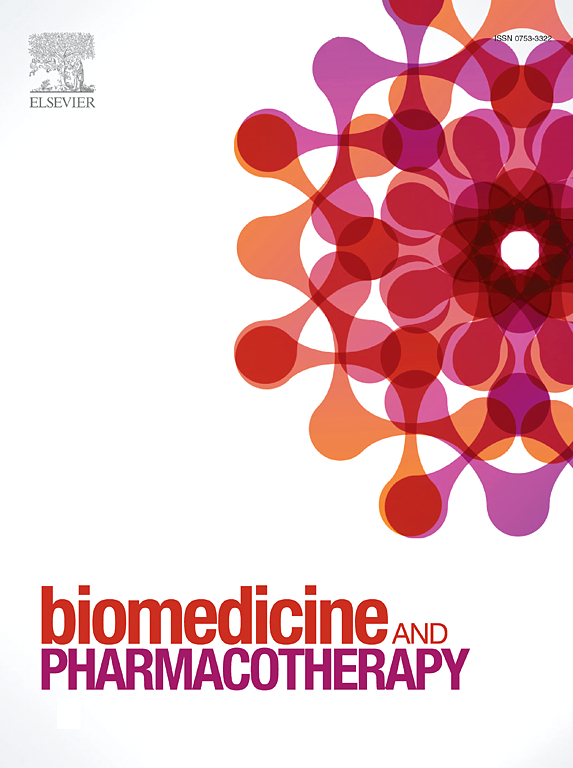皮内注射新型沙眼衣原体微粒候选疫苗可产生保护性免疫反应
IF 6.9
2区 医学
Q1 MEDICINE, RESEARCH & EXPERIMENTAL
引用次数: 0
摘要
沙眼衣原体是全球最常见的细菌性性传播感染。由于沙眼衣原体的生命周期复杂,且缺乏合适的抗原递送载体,因此很难开发出有效的沙眼衣原体疫苗。最近,细菌蛋白体(PBs)已成为一种很有前景的疫苗抗原递送生物颗粒。通过开发用于翻译融合的 PB 标记,我们能够诱导大肠杆菌表达的重组抗原聚集到 PB 中。在这里,我们研究了含有沙眼衣原体 MOMP 衍生的 CTH522-SP 或 HtrA 抗原的 PB 在小鼠体内的免疫原性和有效性。皮内注射 c-di-AMP 佐剂的 PB-CTH522-SP 和 PB-HtrA 疫苗(由 LPS 解毒的大肠杆菌菌株生产)可诱导抗原特异性细胞免疫,具体表现为引流颈淋巴结和脾脏细胞培养物中 IFN-γ 和 IL17a 的显著释放。此外,在脾脏中还检测到大量诱导HtrA特异性IFN-γ表达的CD4+和CD8+T细胞。虽然两种 PB 疫苗免疫可在血清和阴道中产生大量特异性抗体,但只有 PB-CTH522-SP 抗血清表现出沙眼衣原体特异性中和活性。重要的是,皮内免疫 PB-CTH522-SP 能显著减少沙眼衣原体生殖器挑战后的细菌数量。这些数据凸显了基于 PB 平台开发沙眼衣原体疫苗的潜力。本文章由计算机程序翻译,如有差异,请以英文原文为准。
Intradermal administration of novel particulate Chlamydia trachomatis vaccine candidates drives protective immune responses
Chlamydia trachomatis causes the most prevalent bacterial sexually transmitted infection worldwide. Its complex lifecycle and the lack of appropriate antigen delivery vehicles make it difficult to develop an effective C. trachomatis vaccine. Recently, bacterial protein bodies (PBs) have emerged as promising bioparticles for vaccine antigen delivery. By developing a PB-tag for translational fusion, we were able to induce the aggregation of recombinant antigens expressed in Escherichia coli into PBs. Here, we investigated the immunogenicity and efficacy of PBs containing either the C. trachomatis MOMP-derived CTH522-SP or HtrA antigen in mice. Intradermal administration of c-di-AMP-adjuvanted PB-CTH522-SP and PB-HtrA vaccines, produced in an LPS-detoxified E. coli strain, induced antigen-specific cellular immunity, as measured by significant release of IFN-γ and IL17a in draining cervical lymph node and splenic cell cultures. Moreover, significant induction of HtrA-specific IFN-γ expressing CD4+ and CD8+ T cells was detected in the spleens. While immunization with the two PB vaccines led to prominent levels of specific antibodies in both serum and vaginal compartments, only antiserum against PB-CTH522-SP exhibited C. trachomatis-specific neutralization activity. Importantly, intradermal immunization with PB-CTH522-SP significantly reduced bacterial counts following C. trachomatis genital challenge. These data highlight the potential of the PB-based platform for the development of C. trachomatis vaccines.
求助全文
通过发布文献求助,成功后即可免费获取论文全文。
去求助
来源期刊
CiteScore
11.90
自引率
2.70%
发文量
1621
审稿时长
48 days
期刊介绍:
Biomedicine & Pharmacotherapy stands as a multidisciplinary journal, presenting a spectrum of original research reports, reviews, and communications in the realms of clinical and basic medicine, as well as pharmacology. The journal spans various fields, including Cancer, Nutriceutics, Neurodegenerative, Cardiac, and Infectious Diseases.

 求助内容:
求助内容: 应助结果提醒方式:
应助结果提醒方式:


